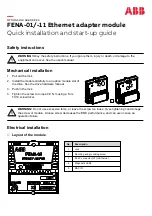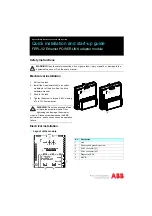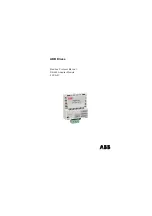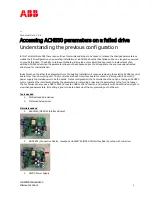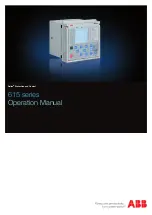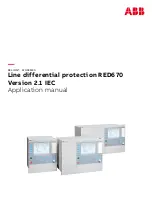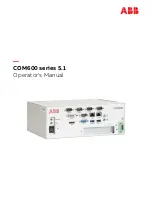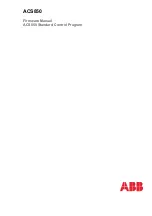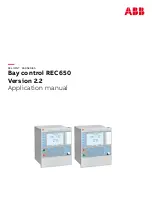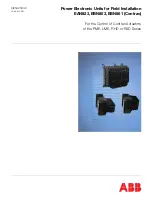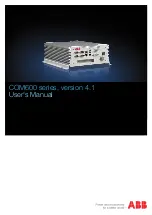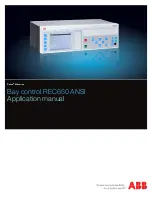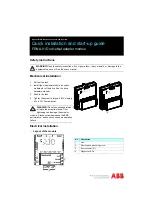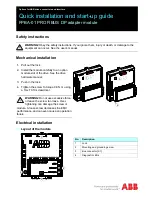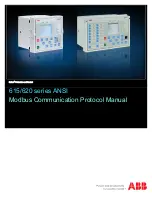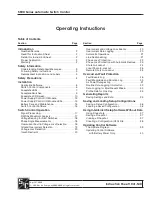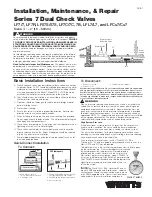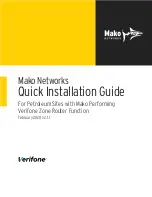
GENERAL DESCRIPTION
Generally speaking, the Vega
multi
-
module series is a family of microprocessor controlled interface devices permitting the monitoring and
control of auxiliary devices. These are loop powered devices that operate according to the Vega analogue
-
intelligent protocol and are char-
acterized by low current consumption; their particular design allow an easy and fast installation.
A channel is a multi
-
module
’
s sub
-
device through which monitoring and control of analogue
-
loop
-
extraneous auxiliary devices is exerted by
the analogue control panel. Multi
-
modules are, by a matter of fact, multi
-
channel devices.
In detail Vega multi
-
modules are:
HFI
-
IO
-
404
-
01
–
is composed by 4 input channels and 4 form C outputs.
HFI
-
IO
-
422
-
01
–
is composed by 4 input channels, 2 supervised output channels and 2 form C output channels.
HFI
-
IO
-
602
-
01
–
is composed by 6 input channels and 2 form C output channels.
SHORT
-
CIRCUIT ISOLATOR
The multi
-
module has a built
-
in bidirectional isolator designed to provide short circuit
isolation and functional protection features for the analogue
-
intelligent loop.
When activated, the isolator will
“
cut out
”
the adjacent loop
’
s section where the short
occurred; on the other hand, all functions of the devices situated on opposite loop
’
s
section of the multi
-
module will be unaffected and operate normally.
When the short is removed, the multi
-
module restores power to the isolated loop
’
s
section and its devices.
LED INDICATORS
Multi
-
modules are equipped with two LED indicators: one is dedicated to the input channels and the second one is dedicated to the output
channels (picture 9); these are green/red/amber three
-
colour LEDs. When all channels are in normal conditions, the status of the first input
channel (considering a sequential order based on the loop addresses given to the channels) is signalled on the input LED, and the status of
the first output channel is signalled on the output LED. If one channel alters its condition (fault or alarm), then the related LED signals the
condition of it. If more than one channel is in a not
-
normal condition, the first one in addressing order is signalled.
ADDRESSING
Multi
-
modules are analogue
-
addressable devices. Each multi
-
module type can be assigned more than one address, this depends by the
choices made by the installer of the fire security system and its design.
If installed on a loop, the multi
-
module must be assigned at least one address, with a value ranging from 1 to 240, which corresponds to the
first input channel that is always active and cannot be disabled: all the other ones can be activated or deactivated by the installer, depending
on his needs, from the control panel (if it has been implemented with such control feature); each multi
-
module takes up to 8 addresses
sequentially, and no inactive gaps are allowed between two active addresses.
Similarly to every Vega device, each active channel can be controlled by the control panel and must have a unique address.
Automatic addressing can be performed on this kind of devices (consult the analogue
-
intelligent auto
-
addressing feature described on the
related application notes).
Alternatively to control panel
’
s addressing and management, the first address of multi
-
modules can be set by using a special hand
-
held
programming unit; for more information about manual addressing, please, refer to the programming unit
’
s instruction manual.
NOTE: The multi
-
modules can hold up to 8 active addresses. The address assigned by the programmer always relates to the input
channel; to the remaining active channels are automatically assigned the consecutive addresses.
INSTALLING THE MULTI
-
MODULES
For specific information regarding detector and device
’
s spacing, placement and special applications refer to your specific national stand-
ards.
1. Select the position of the multi
-
module before installing and fixing it.
2. Securely fix the device
’
s box to the wall with the provided screws (see picture 5 and 6).
3. Multi
-
module
’
s device box is designed with three cable entry knockout holes, present on each lateral side, allowing sealed, cable gland
fitted, loop and auxiliary device
’
s cables to be connected to the device and, at the same time, to preserve the IP protection rating (picture 7).
Fit the cable gland (or glands) to the cables.
4. Fit the cable
’
s gland (or glands) into the device box
’
s cable entry (or entries).
5. Feed the cables into the box, giving them a sufficient length.
6. Connect the cable
’
s terminals to the device
’
s terminal blocks as indicated in the wiring paragraphs.
7. After installing all multi
-
modules and other loop devices, apply power to the loop in accordance with the control panel
’
s installation instruc-
tions.
8. Test multi
-
module
’
s effectiveness and reset the system as described in the TESTING and RESET paragraph.
9. Position the front cover onto the device
’
s box and tight it with the supplied screws until a good seal is obtained (picture 8).
WARNINGS AND LIMITATIONS
Our devices use high quality electronic components and plastic materials that are highly resistant
to environmental deterioration. However, after 10 years of continuous operation, it is advisable to
replace the devices in order to minimize the risk of reduced performance caused by external
factors. Ensure that this device is only used with compatible control panels. Detection systems
must be checked, serviced and maintained on a regular basis to confirm correct operation.
Smoke sensors may respond differently to various kinds of smoke particles, thus application
advice should be sought for special risks. Sensors cannot respond correctly if barriers exist
between them and the fire location and may be affected by special environmental conditions.
Refer to and follow national codes of practice and other internationally recognized fire engineer-
ing standards.
Appropriate risk assessment should be carried out initially to determine correct design criteria
and updated periodically.
WARRANTY
All devices are supplied with the benefit of a limited 3 years warranty relating to faulty materials
or manufacturing defects, effective from the production date indicated on each product.
This warranty is invalidated by mechanical or electrical damage caused in the field by incorrect
handling or usage.
Product must be returned via your authorized supplier for repair or replacement together with full
information on any problem identified.
Full details on our warranty and product
’
s returns policy can be obtained upon request.
HFI
-
IO
-
404
-
01
-
MULTIWAY I/O UNIT 4 INPUT, 4 RELAY OUTPUT
-
BOXED
HFI
-
IO
-
422
-
01
-
MULTIWAY I/O UNIT 4 INPUT, 2 RELAY OUTPUT, 2 SUPERVISED OUTPUT
-
BOXED
HFI
-
IO
-
602
-
01
-
MULTIWAY I/O UNIT 6 INPUT, 2 RELAY OUTPUT
-
BOXED
VEGA MULTI
-
MODULES
CAUTION
Disconnect loop power before installing the multi
-
modules.
CAUTION
Electrostatic Sensitive Device.
Observe precautions when handling and making connections.
TECHNICAL SPECIFICATIONS **
Compatible communication /
control protocol
Vega analogue
-
intelligent protocol
Vega protocol voltage range
from 4 V to 42 V
Device operative voltage range *
from 18 V to 40 V
Standby current consumption
500 µA at 24 V
Supervised input and supervised
output
“
end of line
”
resistor
recommend value (R
EOL
)
27 K
Ω
Supervised input auxiliary de-
vice
’
s series resistor to the switch
recommended value (R
SW
)
10 K
Ω
Operating temperature range
from –
10
°C to + 55 °C
Humidity
from 5 RH% to 93 +
-
3% RH not
condensing)
Dimensions
210 x 170 x 65 mm
Weight
470 grams
Cable entry knockout holes
measures
1X M25/32, 2X M16/20 for each
lateral side of the device
’
s box
IP rating
65
Applicable wire gauge range
from 0.5 mm
2
to 2.5 mm
2
*Product operates down to 15 V, but without LED indication.
**Technical data: see document TDS
-
VMICX held by the manufacturer.
Picture 1
-
multi
-
module
’
s
external overview
Picture 2
-
multi
-
module
’
s
overview (without front cover)
Picture 3
-
multi
-
module
’
s internal
overview showing the device
’
s
internal PCB.
Table 1
210 mm
170 mm
65 mm
Picture 4
-
device
’
s dimensions
Picture 5
-
locations for wall fixing screw
insertion holes on the multi
-
module
195 mm
155 mm
160 mm
120 mm
Picture 6
-
device box
’
s rear view:
distances between screw insertion holes
IP
-
safe screw holes
Knockout screw holes
IP
-
safe screw holes
Picture 7
-
cable
’
s entry
knockout holes
Picture 8
-
placement of the device
’
s cover onto
its box and sealing screw
’
s insertion holes
Picture 9
-
terminal block
’
s schemes
for the multi
-
module
’
s family
HFI
-
IO
-
404
-
01
HFI
-
IO
-
422
-
01
HFI
-
IO
-
602
-
01
Picture 10
-
terminal block M1 for
device
’
s connection to the loop
Hyfire Wireless Fire Solutions Limited
-
Unit B12a, Holly Farm Business Park, Honiley,
Warwickshire, CV8 1NP
-
United Kingdom
www.hyfirewireless.com
L20
-
VMICX
-
1400 (vA.1Q)
ISOLATOR SPECIFICATIONS
Maximum rated continuous current with the
switch closed
-
I
C
max
350 mA
Maximum rated switching current (e.g. under
short circuit conditions)
-
I
S
max
350 mA
Maximum leakage current with the switch
open (isolated state)
-
I
L
max
7.4 mA
Maximum series impedance with the switch
closed
-
Z
C
max
0.11
Ω
The voltage at which the device isolates (i.e.
switches from closed to open)
-
V
SO
11 V ± 5%
The voltage at which the device reconnects
(i.e. switches from open to closed)
-
V
SC
13 V ± 5%
WIRING THE MULTI
-
MODULE
-
GENERALITIES
The multi
-
module must be:
a) connected to the analogue loop, as any other analogue device
b) connected to the monitored and/or controlled auxiliary device (or devices).
In picture 9 are illustrated the terminal block
’
s schemes of the various types of multi
-
modules.
Picture 10 illustrates specifically the connection of the M1 terminal block
’
s set, common to all multi
-
modules devices, for the connection to
the analogue
-
intelligent loop.
THE SUPERVISED INPUT CHANNEL AND ITS WIRING
This channel provides monitoring of normally open contact fire alarm devices (picture 11).
This channel is capable of supervising an adequate
“
end of line
”
resistor (R
EOL
) fitted into its
terminals; purpose of this supervision is to distinguish between the following conditions:
a. Normal condition.
b. Alarm condition.
c. Short circuit fault condition.
d. Open circuit fault condition.
R
SW
guarantees the alarm current when the switch is closed.
Picture 11
-
supervised input channel
’
s wiring
Channel's input (
-
)
Channel's input (+)
External device
Switch
R
SW
R
EOL
Hyfire Wireless Fire Solutions Limited
-
Unit
B12a, Holly Farm Business Park, Honiley,
Warwickshire, CV8 1NP
-
United Kingdom
EN 54
-
17:2005
EN 54
-
18:2005
HFI
-
IO
-
404
-
01
HFI
-
IO
-
422
-
01
HFI
-
IO
-
602
-
01
For use in compatible fire detection and alarm
system
0051
21
HF
-
20
-
032CPR
HF
-
20
-
033CPR
HF
-
20
-
034CPR



